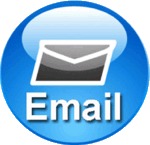 Marketing e-mails are at risk of being blocked as spam because companies are not correctly managing their e-mail communications, according to a survey conducted by the Direct Marketing Association (DMA) – the leading authority in direct marketing.
Marketing e-mails are at risk of being blocked as spam because companies are not correctly managing their e-mail communications, according to a survey conducted by the Direct Marketing Association (DMA) – the leading authority in direct marketing.
More than half of the businesses questioned admitted they did not restrict the amount of messages that can be sent in a given period, while a fifth of marketers interviewed are failing to remove email addresses from mailing list after they bounce back.
According to the DMA, this has “potentially catastrophic implications for their sender reputation” and could result in their Internet Service Providers (ISP’s) blocking their marketing messages as spam. With more companies using email as part of their overall marketing strategy, this needs to be urgently addressed.
So how can your business use e-marketing successfully and avoid spam filters?
Investing in dedicated email software and using it correctly is essential to avoid spam filters. If you send out bulk emails from the same email address or domain you could easily get blacklisted on the ISP’s blacklist register and your email blocked as spam.
Here are some tips on choosing the right email software;
Stagger Sending
Use a software system that staggers bulk sending; so instead of 3,000 emails sent simultaneously it sends in bursts, thus reducing the risk of ISPs identifying large volume spam.
Spam Test
Choose a system that “spam” scores your email. This technology uses the latest spam software to scan your email against know criteria and gives a spam score. The word Essex for example (Es – sex) could increase your spam score and lots of “click here” hyperlinks can bump up your spam score. Using spam-scoring software enables you to tweak your email and increase deliverability rates.
Inbox Test
Use software that provides “Inbox Testing”. You may think your email looks great, but when it arrives in Hotmail, Gmail, Outlook 2003, Outlook 2007, AOL or Yahoo Mail it can look completely different. Inbox testing allows you to preview how your email will look in all the major email clients before you send it – improving your response rate.
Have an Unsubscribe List
You must include an unsubscribe option, and be sure to remove any recipient from future mailings. Failure to do so can result in penalties and the recipient can report you (this person is spamming me) which can result in your domain being added to blacklists. Manage your unsubscribe list to ensure this doesn’t happen!
View in Browser
Many email clients – such as Outlook or Hotmail – will block images automatically, and recipients need to click to enable viewing of the full email. However, if for whatever reason this doesn’t happen (an over-eager email client strips out the content), be sure to include a “view in browser” option whereby the recipient can click on a link to see the email in all its glory on their web browser.
Use accurate Data
Email data degrades at over 5% per month. People move, change jobs, change email addresses or domains, and inevitable email addresses can be incorrect (.com rather than co.uk). Be sure to update and refresh your email data list every time you send an email campaign.
Track your results
Be sure to monitor your deliverability rates, email-opening rates, and click-through rates to your website or purposed-designed microsite/landing page (created specifically for your email campaign).
I don’t have the time or resources to do email marketing!
With over 150 billion emails recorded as spam every day, effective email marketing is a science. For this reason it is often outsourced to a specialist company to avoid the pitfalls outlined in this article. Insight Data has a specialist email marketing division that uses its own world-class email marketing technology, MailMinx, along with a dedicated team of digital marketing experts. What’s more, as the UK’s leading provider of prospect data for the window, conservatory and building industry we also hold and update over 50,000 email records.







